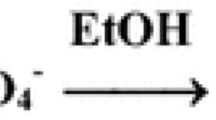Summary
Microgravimetric methods are very useful for quantitative studies on brain edema. One of the techniques available is based on a gradient made up by NaCl and polyvinyl pyrrolidone-coated silica particles (Percoll). The present study was performed to find a way of minimizing fluid shifts between the gradient and the samples. For this purpose, five Percoll density gradients containing various concentrations of sucrose in isotonic saline were prepared. Equivalent samples of normal mouse brain were then added and their second slow movement (drift) indicating interactions between the tissue and the gradient was followed. A concentration of 0.125 M sucrose eliminated the drift of the samples almost entirely.
The capacity of this sucrose-containing gradient to reveal brain edema was then evaluated by comparing the density values obtained with those measured in the traditional bromobenzene-kerosene gradient as described by Nelson et al. (1971). For this purpose, we produced in the mouse an acute cytotoxic edema by triethyltin intoxication and a vasogenic edema by a cortical cryogenic injury. The two gradients showed almost identical results.
We conclude, therefore, that the 0.125 M sucrose-containing Percoll gradient is a very good alternative to bromobenzene-kerosene gradients used for brain density determinations. Furthermore, Percoll gradients are very stable and contain only non-toxic ingredients.
Similar content being viewed by others
References
Åkerström G, Pertoft H, Grimelius L, Johansson H (1979) Density determinations of human parathyroid glands by density gradients. Acta Pathol Microbiol Scand A 87:91–96
Arborgh B, Bell P, Brunk U, Collins VP (1976) The osmotic effect of glutaraldehyde during fixation. A transmission electron microscopy, scanning electron microscopy and cytochemical study. J Ultrastruct Res 56:339–350
Bito LZ, Myers RE (1972) On the physiological response of the cerebral cortex to acute stress (reversible asphyxia). J Physiol (Lond) 221:349–370
Bone Q, Denton EJ (1971) The osmotic effects of electron microscope fixatives. J Cell Biol 49:571–581
Brunk U, Ericsson JLE (1972) The demonstration of acid phosphatase in vitro cultured tissue cells. Studies on the significance of fixation, tonicity and permeability. J Histochem 4:349–363
Dyson RD (1978) Cell biology: A molecular approach, 2nd edn. Allyn and Bacon, Boston London Sydney Toronto
Ferszt R, Hahm H, Cervós-Navarro J (1980) Measurement of specific gravity of the brain as a tool in brain edema research. In: Cervós-Navarro J, Ferszt R (eds) Brain edema. Advances in neurology, vol 28. Raven Press, New York, pp 15–26
Ferszt R, Neu S, Hahm H, Cervós-Navarro J (1981) The dynamics of minimal necrosis brain edema. In: de Vlieger M, de Lange SA, Beks JWF (eds) Brain edema. Wiley, New York, pp 49–57
Hossmann K-A, Takagi S (1976) Osmolality of brain in cerebral ischemia. Exp Neurol 51:124–131
Johansson B, Linder LE (1981) Hypertension and brain edema: An experimental study on acute and chronic hypertension in the rat. J Neurol Neurosurg Psychiatry 44:402–406
Johansson B, Linder LE (1982) Specific gravity of brain tissue during maturation. A comparison between neonatally 6-hydroxydopamine treated rats and controls. Acta Neurol Scand 66:575–581
Klatzo I, Piraux A, Laskowski EJ (1958) The relationship between edema, blood-brain-barrier and tissue elements in a local brain injury. J Neuropathol Exp Neurol 17:548–564
Klatzo I, Wiśniewski H, Smith DE (1965) Observations on penetration of serum proteins into the central nervous system. In: De Robertis EDP, Carrea R (eds) Progress in brain research, vol 15. Elsevier, Amsterdam, pp 73–88
Klatzo I (1967) Neuropathological aspects of brain edema. J Neuropathol Exp Neurol 26:1–14
Klatzo I, Chui E, Fuijiwara K (1981) Aspects of the blood-brain barrier in brain edema. In: de Vlieger M, de Lange SA, Beks JWF (eds) Brain edema. Wiley, New York, pp 11–18
Marmarou A, Tanaka K, Shulman K (1982) An improved gravimetric measure of cerebral edema. J Neurosurg 56:246–253
Nelson SR, Mantz ML, Maxwell JA (1971) Use of specific gravity in the measurement of cerebral edema. J Appl Physiol 30:268–271
Pertoft H, Laurent TC, Låås T, Kågedal L (1978) Density gradients prepared from colloidal silica particles coated by polyvinyl-pyrrolidone (Percoll). Anal Biochem 88:271–282
Pertoft H, Laurent TC, Seljelid R, Åkerström G, Kågedal L, Hirtenstein M (1979) The use of density gradients of Percoll for separation of biological particles. In: Peeters H (ed) Separation of cells and subcellular elements. Pergamon Press, Oxford London, pp 67–72
Rapoport S (1976) Blood-brain barrier in physiology and medicine. Transport in cells and tissue. Raven Press, New York
Richardson JA, Pratt-Thomas HR (1951) Toxic effects of varying doses of kerosene administered by different routes. Am J Med Sci 221:531–539
Siegel GJ, Stahl WL, Swanson PD (1981) Ion transport. In: Siegel GJ, Albers RW, Agranoff BW, Katzman R (eds) Basic neurochemistry, 3rd edn. Little, Brown and Co., Boston, pp 107–143
Stein WD (1967) The movement of molecules across cell membranes, vol 6. The movement of water. Academic Press, New York London
Takagi H, Shapiro K, Marmarou A, Wisoff H (1981) Microgravimetric analysis of human brain tissue. Correlation with computerized tomography scanning. J Neurosurg 54:797–801
Tengvar C, Forssén M, Hultström D, Olsson Y, Pertoft H, Pettersson Å (1982) Measurements of edema in the nervous system. Use of Percoll density gradients for determination of specific gravity in cerebral cortex and white matter under normal conditions and in experimental cytotoxic brain edema. Acta Neuropathol (Berl) 57:143–150
Tengvar C, Olsson Y (1982) Uptake of macromolecules into neurons from a focal vasogenic cerebral edema and subsequent axonal spread to other brain regions. A preliminary study in the mouse with horseradish peroxidase as a tracer. Acta Neuropathol (Berl) 57:233–235
Tornheim PA, McLaurin RL (1981) Acute changes in regional brain water content following experimental closed head injury. J Neurosurg 55:407–413
Author information
Authors and Affiliations
Additional information
Supported by grants from the Swedish Medical Research Council, project no. 12X-03020, Trygg-Hansa, Svenska Läkarsällskapet, Söderbergs stiftelser, and Åhlénstiftelsen
Rights and permissions
About this article
Cite this article
Tengvar, C., Hultström, D. & Olsson, Y. An improved Percoll density gradient for measurements of experimental brain edema. Acta Neuropathol 61, 201–206 (1983). https://doi.org/10.1007/BF00691986
Received:
Accepted:
Issue Date:
DOI: https://doi.org/10.1007/BF00691986




